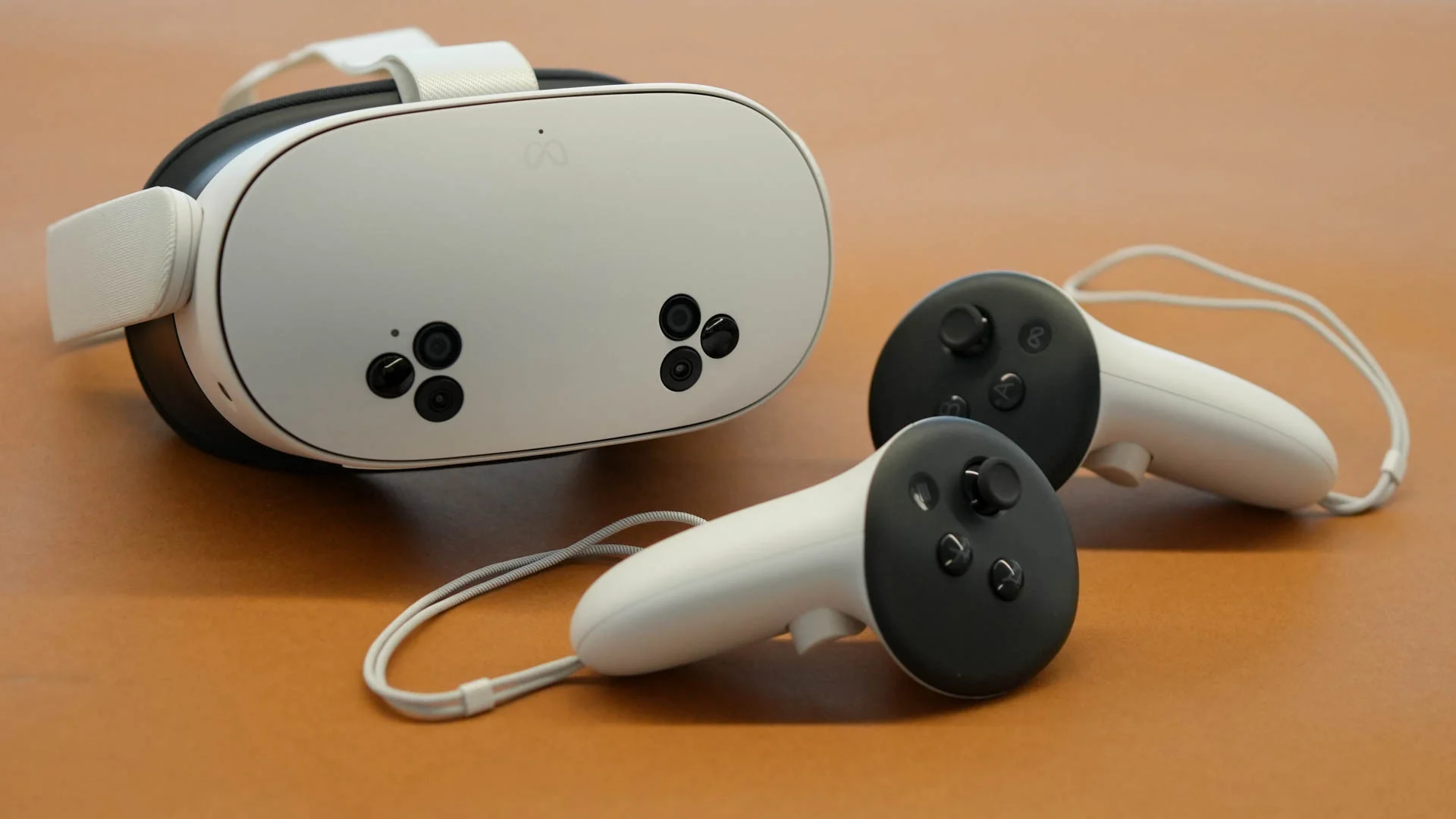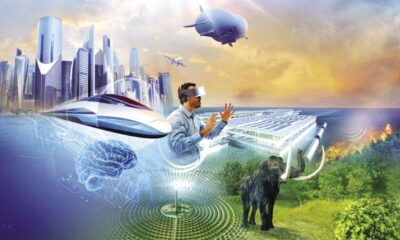TECH
Choosing the Right Internet Service Provider (ISP)

The internet connects us to work, entertainment, family, and information. Choosing the right Internet Service Provider (ISP) can often feel overwhelming, given the variety of options and technical jargon involved. Whether you’re streaming HD movies, building an online business, or just scrolling social media, the speed and reliability of your internet matter.
This guide breaks down everything you need to know about ISPs—what they do, the key features to look for, and how to choose the one that’s best for you.
What is an ISP and Why Does It Matter?
An Internet Service Provider (ISP) is a company that provides internet access to your home or business. ISPs act as the middleman, connecting you to the world wide web. They affect not only your internet speed but also your reliability, customer service experience, and ultimately, how smoothly online activities run.
A good ISP ensures:
- Fast Speeds for things like video calls, gaming, and streaming.
- Minimal Downtime so your connection doesn’t drop when you need it most.
- Fair Pricing that meets your budget while providing the services you need.
But with so many options out there, how do you know which ISP is right for you? Here’s where we start.
Types of Internet Services Explained
Not all internet connections are created equal. Each type of connection comes with its own benefits, depending on your location, usage, and needs.
Fiber-Optic Internet
Fiber-optic internet is the gold standard of speed and reliability. Using tiny strands of glass to transmit data at almost the speed of light, fiber offers:
- Extremely fast download and upload speeds (great for remote work and gaming).
- Reliability during high traffic periods.
However, fiber-optic networks are not yet available everywhere, especially in rural areas, so its availability can be one drawback.
Cable Internet
Cable internet uses the same technology as cable television to deliver internet services. It’s widely available and offers fast speeds, making it great for households with multiple users.
- Pros: Reliable for streaming and moderate gaming.
- Cons: Slower during heavy use times because of shared bandwidth.
DSL (Digital Subscriber Line)
DSL internet operates through telephone lines and is one of the most affordable options available. It’s a good choice for light internet users who prioritize affordability over blazing speed.
- Pros: Budget-friendly and widely available in rural areas.
- Cons: Speeds are lower compared to cable or fiber.
Satellite Internet
Satellite connects you to the internet via satellites orbiting Earth, making it a savior for rural areas.
- Pros: Available virtually anywhere.
- Cons: High latency and slower speeds, which can be a problem for activities like gaming or video conferencing.
5G and Fixed Wireless Internet
With the rise of 5G technology, fixed wireless internet is growing in popularity as a fast and flexible option. Signals are sent directly to your home through a wireless connection, eliminating the need for cables.
- Pros: Quick installation and decent speeds.
- Cons: May not yet be available everywhere.
Understanding these types will help narrow down your options as you choose an ISP.
Key Features to Consider When Selecting an ISP
When comparing ISPs, you’ll want to evaluate more than just their advertised speeds. Below are critical factors to consider to ensure you’re getting the best value.
1. Speed and Bandwidth
Ask yourself the following questions:
- Do you work remotely or attend virtual meetings?
- Are you an avid gamer or streamer?
For households with multiple users or heavy internet use, you’ll want at least 100 Mbps download speeds. Gamers and remote workers may need even higher speeds.
2. Data Caps
Some ISPs impose data caps, limiting how much data you can use each month. Exceeding this limit might result in slowed speeds or additional charges. If you stream HD content or work in data-heavy occupations, look for providers with unlimited data plans.
3. Reliability
Find an ISP with a strong reputation for reliability. Frequent outages can wreak havoc on work deadlines, online classes, or even your latest Netflix binge session. Check provider reviews to see how well they handle downtime.
4. Customer Service
Tech hiccups are bound to happen, so having responsive customer service is a must. Look for providers with 24/7 support and good customer satisfaction scores.
5. Pricing and Bundles
Understand the pricing structure, including hidden fees like equipment rental or installation costs. ISPs often offer bundles with TV or phone services, so it could be worth considering if you need multiple services.
6. Contracts and Flexibility
Some ISPs require long-term contracts, while others provide no-commitment monthly plans. If you move frequently, flexibility should be a top priority.
Tips for Comparing and Selecting an ISP
When choosing an ISP, use these steps to narrow down your options:
- Check Availability
Visit ISP websites or use tools like Broadband Now to see which providers operate in your area.
- Evaluate Your Usage
Make a list of your household’s needs. Light users will have different requirements than gamers or a remote-working family of five.
- Read Customer Reviews
Reviews on sites like Trustpilot or social media give insights into user experiences and highlight recurring problems.
- Ask About Promotions and Fees
Many ISPs offer discounts for new customers. Confirm the actual monthly costs once the promotional period ends.
- Test Your Current Internet
Evaluate your current connection speed at Speedtest.net. Based on your results, you’ll know whether to aim for similar speeds or upgrade.
Take Your Internet Experience to the Next Level
Choosing the right ISP impacts your daily life more than you might realize. It keeps you connected, productive, and entertained—all while preventing unnecessary frustrations. With the tips in this guide, you’re ready to compare options confidently and select the service that meets your unique needs.
Whether you’re binge-watching your favorite shows, running a home office, or just scrolling through your favorite memes, the right internet service makes it all possible.
Common Internet Issues and How to Fix Them
Even with the best ISP, occasional internet issues are inevitable. Knowing how to identify and fix common problems can save you time and reduce frustration. Below are some typical issues and their solutions:
1. Slow Internet Speeds
If your internet feels sluggish, the problem could be related to your network, devices, or even your ISP. Here’s how to troubleshoot:
- Restart your router and modem: Power cycling these devices often resolves temporary glitches.
- Check for background activity: Downloads or updates on connected devices can consume bandwidth.
- Run a speed test: Use services like Speedtest.net to see if your speeds match what your ISP promised. If not, contact your provider.
2. Intermittent Connectivity
Frequent drops in connection can be disruptive, especially during video calls or online gaming. Steps to diagnose and fix this include:
- Check your connections: Ensure all cables are securely plugged into your modem and router.
- Relocate your router: Interference from walls, metal objects, or other electronics can weaken Wi-Fi signals. Place the router in a central, elevated location to improve coverage.
- Update your firmware: Outdated router software may cause connectivity issues. Check your router’s user manual for update instructions.
3. No Internet Connection
A complete loss of internet can be particularly frustrating. Here’s what to do:
- Verify with your ISP: Check if there is an outage in your area by contacting your ISP’s support or visiting their website.
- Inspect your hardware: Ensure the modem and router lights are on and functioning as expected. If they aren’t, try restarting them.
- Reset to factory settings: If problems persist, resetting your router to its default settings may fix configuration issues.
4. Weak Wi-Fi Signal
Poor Wi-Fi coverage can result in dead zones within your home. Boost your signal with these tips:
- Upgrade your hardware: Consider investing in a more powerful router or range extenders to improve coverage.
- Switch to a different frequency: Modern routers offer both 2.4 GHz and 5 GHz bands. The 5 GHz band provides faster speeds but shorter range, while 2.4 GHz covers wider areas.
- Reduce device interference: Minimize obstacles like walls and avoid placing your router near microwaves or cordless phones.
5. High Latency
Latency, or lag, can be a major concern for gaming and video calls. Steps to reduce lag include:
- Close unnecessary programs: Disable bandwidth-heavy applications or background processes during gaming or streaming.
- Use a wired connection: Ethernet cables provide Internet Service Provider (ISP) more stable and faster connections than Wi-Fi for latency-sensitive activities.
- Choose the right server: If you’re playing online games, select the server that’s geographically closest to your location.
When to Call Your ISP
If you’ve tried resolving the issue and it persists, it may be time to contact your ISP. Be prepared to provide details about your problem, the steps you’ve taken to resolve it, and the results of any speed or connectivity tests.
By understanding and addressing these common issues, you can maintain a more seamless online experience and make the most of your internet service.
Advanced Tips for Optimizing Your Internet Connection
For those who want to take their internet performance to the next level, consider these advanced strategies:
1. Prioritize Devices on Your Network
Modern routers often support Quality of Service (QoS) settings, Internet Service Provider (ISP) allowing you to prioritize specific devices or types of traffic on your network. This is particularly useful for ensuring uninterrupted performance during video calls, gaming, or streaming.
- Access your router settings: Log in to your router’s management interface, usually via a web browser, and locate the QoS section.
- Set up priorities: Assign higher priority to tasks or devices, such as work computers or gaming consoles, to allocate more bandwidth to those activities.
2. Use a Mesh Wi-Fi System
If you have a large home or experience frequent dead zones, upgrading to a mesh Wi-Fi system internet service can help. Internet Service Provider (ISP) Unlike traditional routers, mesh systems use multiple nodes to provide seamless coverage throughout your space.
- Place nodes strategically: Install nodes in key areas where Wi-Fi coverage is weakest.
- Expand as needed: Many mesh systems allow you to add more nodes for additional coverage if your home layout changes or you add new rooms.
3. Secure Your Network
A secure connection not only protects internet service your data but also prevents others from freeloading on your bandwidth, which could slow your network.
- Use a strong password: Create a complex Wi-Fi password with a mix of letters, numbers, and special characters.
- Enable encryption: Ensure your router uses WPA3 encryption (or WPA2 if WPA3 is unavailable) for added security.
- Disable WPS: Wi-Fi Protected Setup (WPS) can make your network vulnerable to brute force attacks; turn it off if not needed.
4. Optimize Router Placement
Router placement is critical internet service for achieving optimal signal strength and coverage. Follow these guidelines for the best results:
- Centralize your router: Position it in the center of your home to distribute the signal evenly.
- Elevate the device: Place the router on a shelf or a tall piece of furniture to reduce interference.
- Minimize obstacles: Avoid placing it near walls, mirrors, or large appliances that can block signals.
5. Monitor Your Network Usage
Keeping track of how your network is utilized can help you identify and address bottlenecks.
- Use router analytics: Many modern routers provide insights into data usage by device, helping you spot any devices consuming excessive bandwidth.
- Install third-party software: Tools like Net Balancer or can provide advanced monitoring and control over your connected devices.
By implementing these advanced tips, you can achieve a faster, more reliable, and secure internet connection, perfectly tailored to your household’s needs. Whether you’re working remotely, streaming in 4K, or gaming online, these strategies will help you get the most out of your ISP service.
TECH
Designing the Perfect Website for Clingr Users

Creating a Digital Home That Engages and Converts
Your website is the digital storefront of your business. For Clingr, a platform designed to bring people closer, having an engaging, user-friendly website is essential to attract and retain users. Whether you’re looking to foster deep friendships or meaningful networks, your website should reflect the values and functionality that Clingr stands for.
This blog will guide you through key principles and strategies for designing the perfect website for Clingr users. From user experience (UX) design to creating visually captivating aesthetics, we’ll explore the elements that contribute to a successful, functional, and conversion-driven website.
Why Website Design Matters
Your website often forms the first impression of your platform. Consider these statistics:
- 75% of users judge a company’s credibility based on its website design.
- If your site takes over 3 seconds to load, 53% of mobile visitors will leave immediately.
For Clingr, a platform that thrives on relationships, a poorly designed website can drive users away before they even sign up! Our goal is to develop a site that embodies your mission of connection and fosters immediate trust.
Guiding Principles for Clingr Website Design
1. Prioritize User-Focused Design
A user-centric design is the backbone of any successful website. For Clingr, you must cater to two types of users:
- The Curious Visitor: Someone exploring your platform for the first time.
- The Active Community Member: Someone already invested in Clingr’s offerings.
Tips to Execute User-Focused Design:
- Intuitive Navigation: Use a clean and straightforward menu that guides users effortlessly. Avoid overwhelming them with too many options.
- Clear Calls-to-Action (CTAs): Buttons like “Sign Up,” “Join Now,” or “Start Connecting” should be prominent and visually appealing. Make users’ next steps feel obvious.
- Personalization: Offer tailored content and suggestions for returning users. For example, recommend groups or communities they might be interested in.
2. Prioritize Speed and Accessibility
Speed and accessibility are essential elements of any modern website. Clingr users expect your website to load fast and be accessible across various devices and browsers.
Best Practices for Speed Optimization:
- Optimize images and graphics for faster load times. Striking imagery is fantastic but shouldn’t compromise speed.
- Minimize JavaScript and CSS files through compression. This reduces file size and enhances site performance.
Accessibility Considerations:
- Ensure compatibility with screen readers.
- Use alt text for all images to cater to visually impaired users.
- Maintain high color contrast to improve readability for all users.
3. Striking the Right Visual Tone
Clingr is all about connection, togetherness, and forming relationships. Your website should embody this ethos visually.
Style and Branding Tips:
- Color Palette: Choose warmer, inviting tones such as blues (trust), greens (growth), and oranges (energy).
- Imagery: Integrate images of people interacting authentically to represent real-world connections.
- Typography: Use modern, clean fonts for readability and professionalism. Ensure consistency across all branding materials.
4. Create Value Through Content
To retain user interest, your website must offer tangible value. Educational content, news updates, and posts from active community members can demonstrate the value of being part of Clingr.
Types of Content to Feature:
- Community Stories: Highlight authentic success stories of individuals or groups who formed meaningful connections via Clingr.
- Expert Blogs: Publish advisory blogs or articles. For example, “How to Build Better Connections Online” or “5 Ways to Build Trust in Digital Communities.”
- FAQs: Address common questions succinctly to help users quickly grasp Clingr’s purpose and functionality.
5. Incorporate Strong Social Proof
Trust is critical in platforms like Clingr, and showcasing user satisfaction is invaluable in building credibility.
How to Feature Social Proof:
- Testimonials: Use real, heartfelt stories from users praising Clingr for its positive impact.
- Statistics (“98% of users said they formed meaningful relationships”): Present credible data points that demonstrate success.
- Media Mentions or Reviews: Have you been praised by notable bloggers or publications? Display those shoutouts prominently.
6. Leverage Artificial Intelligence and Chatbots
Ensure that your visitors always feel guided or assisted, even when you’re offline. AI-integrated chatbots can provide users with real-time answers and help them get started quickly.
Functional Uses of AI for Clingr:
- Welcome new visitors by guiding them to the sign-up process or community spaces.
- Assist with password recovery, account setup, or FAQs.
- Instantly curate personalized suggestions for communities based on users’ specified interests.
Advanced Functionality to Include
Clingr represents modern, dynamic networking. To affirm this, your website needs functionality that exceeds the static web designs of yesteryears.
Key Features to Include:
- Search and Filter Options for easy discovery of communities and events.
- Interactive Features such as user reviews, polls, and surveys to keep users engaged.
- Content Calendar Integration, including reminders for online events or meet-ups.
- Mobile Optimization for perfect performance on tablets and smartphones.
Boost Your Results with Analytics
Building a rapport with your audience doesn’t happen overnight, and measuring success is part of the process. Use analytics tools to determine:
- Which pages users are staying on the longest.
- When and where visitors tend to leave your site.
- Which CTAs are driving sign-ups.
These insights will help you refine your website over time, ensuring its impact continues to grow.
Build Stronger Communities on Clingr
Your website is your most influential tool in showcasing what Clingr stands for and why users should join your platform.
By focusing on user experience, improving accessibility, and incorporating modern web technology, you’ll attract visitors and inspire trust and excitement for your mission.
Whether you’re designing your first site or revamping your current one, always consider your target user base. A well-created digital presence will introduce people to the thoughtful and innovative space you’ve built.
Looking for additional help? Partner with professional designers or developers who can bring your vision to life. For more tips on optimizing community platforms, sign up for our newsletter!
TECH
Understanding the Benefits of Winqizmorzqux Product

When it comes to innovative solutions that streamline processes and elevate experiences, Winqizmorzqux stands out. This product has been designed to bring ease, efficiency, and enhanced functionality to users, making it an essential tool for those seeking cutting-edge technology. But what makes the Winqizmorzqux product so beneficial? And how can it improve your day-to-day operations or lifestyle?
This blog covers the core benefits of Winqizmorzqux and what you need to know to maximize its value.
What is Winqizmorzqux?
Before we explore its benefits, it’s essential to understand what Winqizmorzqux is. At its core, Winqizmorzqux is a [brief description of the product, e.g., an AI-powered tool, productivity software, or a specialized gadget, depending on the product]. It’s designed to address [specific problem] by [specific solution]. Whether you’re a professional, a business owner, or someone looking to improve efficiency, Winqizmorzqux caters to your needs.
Now, let’s take a closer look at why Winqizmorzqux has become a must-have for its growing user base.
Key Benefits of Using Winqizmorzqux
1. Enhanced Efficiency
One of the standout features of Winqizmorzqux is its ability to boost efficiency. By automating repetitive tasks, reducing manual effort, or providing streamlined workflows, users can save time and focus on what truly matters. For example:
- Businesses can reduce operational bottlenecks.
- Individuals can accomplish more with less effort.
This enhanced efficiency translates to increased productivity, whether you’re incorporating Winqizmorzqux into your professional or personal life.
2. Advanced Functionality Packed Into a User-Friendly Design
Not only is Winqizmorzqux powerful, but it’s also intuitive. You don’t need to be an expert to use it effectively. The product’s [specific feature description, e.g., “adaptive interface” or “smart algorithms”] is designed to make your experience seamless and straightforward:
- Easy onboarding for beginners.
- Advanced settings for power users who need more control.
This balance between innovation and simplicity ensures that users of all skill levels can benefit from Winqizmorzqux.
3. Scalability for Long-Term Growth
Winqizmorzqux adapts to your changing needs, making it an ideal long-term solution. Its flexibility allows it to scale alongside businesses or evolving personal tasks. For businesses, this scalability means you don’t need to invest in new tools as your organization grows. For personal users, it means Winqizmorzqux remains beneficial regardless of how your goals or priorities shift over time.
4. Cost-Effectiveness
While innovation often comes at a price, Winqizmorzqux delivers unmatched value. It consolidates multiple features into one product, eliminating the need to invest in multiple tools or solutions.
- Save money on unnecessary subscriptions or add-ons.
- Maximize the value of a single purchase.
5. Superior Customer Support
What truly sets Winqizmorzqux apart is its dedication to excellence, which extends to its customer support. Winqizmorzqux offers comprehensive resources, from detailed guides to responsive support teams, ensuring that users have everything they need to succeed.
Knowing that help is readily available allows users to integrate Winqizmorzqux into their routines.
6. Contributions to Sustainability
For eco-conscious users, Winqizmorzqux reinforces its value with [specific environmentally friendly feature, e.g., energy efficiency or sustainable materials]. Its impact goes beyond functionality; it aligns with modern values that prioritize sustainability.
This makes Winqizmorzqux not just a tool but a responsible choice for the environment.
How Does Winqizmorzqux Work?
Understanding how Winqizmorzqux Product works can help you unlock its full potential. Here’s a quick breakdown:
- Setup – Begin with a simple setup process. Within minutes, Winqizmorzqux is ready to use.
- Customization – Tailor it to meet your specific needs with easy customizations.
- Actionable Insights – Leverage its advanced analytics and real-time feedback to improve outcomes.
Whether used individually or in complex systems, Winqizmorzqux provides significant value at every step.
Who Will Benefit the Most From Winqizmorzqux?
Winqizmorzqux is designed for wide-ranging applications, making it beneficial for:
- Business Owners looking for tools to save costs and simplify workflows.
- Teams searching for collaborative solutions with innovative features.
- Tech Enthusiasts who want to stay ahead with advanced tools.
- Everyday Users aiming to make better use of their time and resources.
How Can You Get Started With Winqizmorzqux?
Getting started with Winqizmorzqux is quick and hassle-free:
- Visit [link to website or store] to learn more.
- Choose the ideal subscription, plan, or configuration for you.
- Enjoy the benefits immediately, supported by onboarding tools and guides.
Whether you’re ready to make a purchase or simply exploring how Winqizmorzqux fits into your needs, [specific actionable next step, e.g., free trial or demo] is available to make your decision easier.
Why Winqizmorzqux is a Game-Changer
Winqizmorzqux represents more than a product; it’s a solution that redefines how users approach [problem or challenge]. It continually proves its worth by enabling efficiency, encouraging innovation, and delivering measurable value. Its [specific standout feature, e.g., design, flexibility, or adaptability] provides a unique combination of unmatched benefits.
Users who integrate Winqizmorzqux into their routines often report [specific user outcome or experience, e.g., reduced workload, better focus, or improved outcomes].
Why Wait? Try Winqizmorzqux Today!
Discover firsthand why Winqizmorzqux Product has become the go-to tool for [the specific audience group mentioned earlier]. Its benefits span efficiency, sustainability, cost-effectiveness, and more. Take the first step by exploring Winqizmorzqux for yourself and seeing the difference it makes.
TECH
The Ultimate Guide to Virtual Reality Headsets: What You Need to Know

Virtual reality headsets have emerged as game-changing devices, altering the way we interact with technology, media, and even one another. But with so many options on the market and constant advancements in VR technology, it can feel overwhelming to choose the right one or even understand what sets each apart.
This guide breaks down everything you need to know about virtual reality headsets—from the features that matter most to their potential applications in entertainment, education, and beyond. Whether you’re a first-time buyer or a seasoned tech enthusiast, you’ll come away with the clarity to make the right decision.
What Is a Virtual Reality Headset?
A virtual reality headset is a device that either completely immerses you in a digital world or augments the physical world around you. It uses high-tech displays, sensors, and software to simulate lifelike experiences, whether you’re playing a game, attending a virtual event, or exploring a 3D-rendered environment.
Most VR headsets feature key components like motion tracking, controllers, and built-in audio systems. These elements combine to create a seamless and interactive experience that makes you feel like you’re truly “inside” the simulated environment.
Types of Virtual Reality Headsets
Not all VR headsets are created equal. Understanding the different types can help narrow down your options based on your needs and intended use.
1. Standalone VR Headsets
Standalone VR headsets, such as the Meta Quest 2, are self-contained units. They don’t require external devices like PCs or consoles to operate. These are ideal for casual users who want a convenient, plug-and-play experience.
Key Features:
- Wireless design
- Onboard storage and processing
- Easy setup
Best For:
Casual gaming, fitness apps, and social VR platforms.
2. PC-Connected VR Headsets
PC-connected headsets, like the Valve Index or HTC Vive Pro, offer cutting-edge graphics and performance. However, they need a high-powered computer to function and are generally more complex to set up.
Key Features:
- Ultra-high-definition graphics
- Wide range of advanced apps
- Precision motion tracking
Best For:
Hardcore gamers, developers, and enterprise-level applications.
3. Console-Tethered Headsets
These headsets plug into gaming consoles like the PlayStation. A popular example is the PlayStation VR2. They are tailored for dedicated gamers but lack the technical versatility of PC-connected models.
Key Features:
- Console compatibility
- Rich game libraries
Best For:
Console gamers who want to expand their gaming experience into VR.
4. Mobile VR Headsets
Mobile VR headsets, such as Samsung Gear VR, are no longer as popular but were an entry point to VR. They used a smartphone as both the display and processing power.
Key Features:
- Accessible and affordable
- Limited performance
Best For:
Light VR experiences for beginners (although largely discontinued).
Features to Look for in a VR Headset
The right VR headset for you will depend on your needs. Here are the key features to consider when shopping for one.
1. Display Quality
Resolution plays a significant role in the overall VR experience. Higher resolution means crisper visuals, which directly impacts immersion. Look for a display resolution of at least 2160 x 2160 per eye for a sharp image.
Also, pay attention to the refresh rate. A higher refresh rate (90Hz or above) ensures smooth visuals, reducing motion sickness.
2. Comfort and Fit
VR sessions can last for hours, so comfort is key. The headset’s weight, strap adjustability, and cushioning should be top priorities. Some high-end headsets offer custom sizing for added convenience.
3. Field of View (FOV)
The field of view determines how much of the digital world you can see at one time. Wider FOVs (typically 100° or above) enhance immersion, making your experience feel less like looking through a pair of binoculars.
4. Motion Tracking and Controllers
Accurate motion tracking allows users to interact with virtual environments seamlessly. Headsets typically use either inside-out tracking or external sensors to monitor movement.
Pair this with intuitive controllers that feature responsive buttons, and you’ll feel completely in control of the virtual space.
5. App Ecosystem
A strong app library ensures you have a wide range of games, experiences, and even productivity tools to explore. Platforms like SteamVR, Oculus Store, and PlayStation Store offer extensive libraries tailored to specific VR headsets.
6. Price Point
VR headsets can range from budget-friendly models under $300 to premium devices costing upwards of $1,000. Your budget will likely determine what features you prioritize. Set a realistic budget and understand the trade-offs you may face.
Uses of Virtual Reality Headsets
VR headsets aren’t just for gamers. Their applications extend across various industries, offering both entertainment and utility benefits.
1. Gaming and Entertainment
Gaming represents the most mainstream application for VR. Platforms like SteamVR and PlayStation VR offer immersive games that push the boundaries of storytelling, interactivity, and design.
Beyond gaming, VR headsets are turning into portable theaters. Platforms like Netflix VR allow users to enjoy movies and shows in a virtual cinema setting.
2. Education and Training
Virtual reality headsets is transforming education by introducing immersive learning experiences. Science students can explore 3D models of human anatomy, and history buffs can virtually “walk” through ancient cities.
Similarly, workplaces use VR for training simulations spanning everything from medical surgeries to engineering tasks. This approach improves learning retention while lowering costs.
3. Fitness and Wellness
VR fitness apps like Supernatural or FitXR help users stay active in exciting ways, merging workouts with gamification. Meditative programs like TRIPP focus on mental wellness, offering immersive environments for relaxation.
4. Design and Creativity
VR tools like Tilt Brush and Gravity Sketch unlock creative potential, allowing artists and designers to create 3D sculptures, blueprints, and models. Many architects and product designers use VR to test prototypes before manufacturing begins.
5. Professional Collaboration
Remote work is more engaging in VR. Tools like Spatial and AltspaceVR allow professionals from around the globe to collaborate in shared virtual office spaces, fostering more connected teams.
The Best VR Headsets on the Market Right Now
If you’re ready to take the plunge, here are the top-rated VR headsets worth considering in 2024.
- Meta Quest 2 (Budget-friendly, standalone, versatile)
- Valve Index (Premium PC-connectivity, advanced controllers)
- PlayStation VR2 (Console integration, exceptional game catalog)
- Pico 4 (Strong performance for standalone users)
Each of these delivers great value in specific areas, catering to different user needs and preferences.
Preparing for a Virtual Future
Virtual reality headsets is no longer reserved for tech aficionados—it’s rapidly becoming a necessity in both entertainment and business. Picking the right VR headset boils down to understanding your priorities, whether it’s immersive gaming, professional use, or exploring revolutionary learning tools.
No matter your reason for stepping into the virtual world, VR technology offers endless possibilities to explore. If you’re still unsure which headset suits you, focus on compatibility with your intended use and start with an option that fits your budget.
The future of tech is truly virtual—and with the right headset, you’re just a step away from experiencing it!
FAQs
1. What is the best VR headset for beginners?
For beginners, standalone headsets such as the Meta Quest 3 or Pico 4 are ideal. They don’t require a powerful PC or console to operate, making them more accessible and easy to set up.
2. Can VR headsets be used for work purposes?
Yes, many VR headsets are designed for professional use. They enable virtual meetings, collaboration, and even advanced training simulations. Devices like the Meta Quest Pro are tailored for business and productivity.
3. Are VR headsets safe to use?
When used responsibly, VR headsets are safe. However, users should take breaks to prevent eye strain and maintain spatial awareness to avoid physical accidents.
4. What accessories can enhance the VR experience?
Accessories like motion controllers, haptic gloves, charging docks, and face pads can enhance comfort and immersion. Consider investing in accessories that align with your specific VR activities.
5. Do I need a high-end PC for VR?
Not necessarily. While some VR devices like the Valve Index require a powerful PC, standalone headsets such as the Meta Quest 3 operate independently, eliminating the need for additional hardware.
6. How much should I spend on a VR headset?
Budget depends on your priorities and use case. Entry-level models typically start around $300, whereas high-end options for gaming or work can range between $600 to $1,000+. Evaluate your needs before committing to a price point.
-

 TECH9 months ago
TECH9 months agoExploring Precision Technologies International: The Future of Advanced Engineering
-

 TECH9 months ago
TECH9 months agoStevens Institute of Technology: Pioneering Innovation and Excellence in Education
-

 NEWS9 months ago
NEWS9 months agoThe NYT’s Take on British Affairs: A Comprehensive Review
-

 FINANCE8 months ago
FINANCE8 months agoInvestiit.com Tips: Maximizing Your Investment Success
-

 HEALTH9 months ago
HEALTH9 months agoThe Ultimate Guide to Physical Therapy Web Design That Converts
-

 NEWS3 months ago
NEWS3 months agoTop 5 Reasons to Follow UKOBIW.com for Your Daily News Fix
-

 CROSSWORD & PUZZLES6 months ago
CROSSWORD & PUZZLES6 months agoVault Opener NYT Crossword: An Informative Guide
-

 HEALTH9 months ago
HEALTH9 months agoThe Allure of Candy Red: A Bold Hue That Never Goes Out of Style
